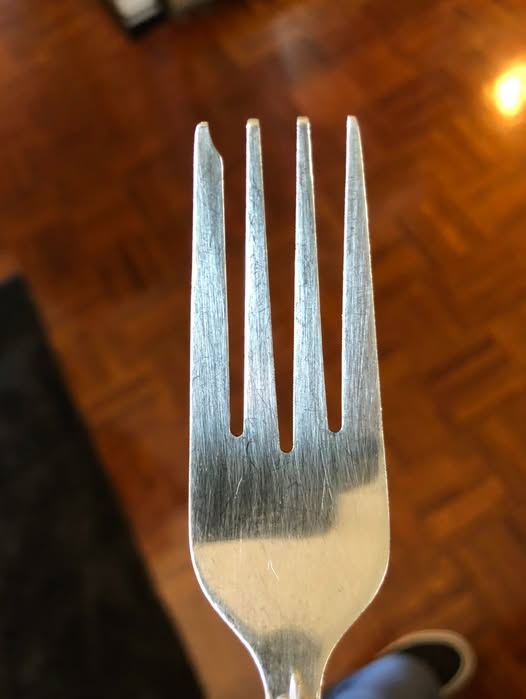ADVERTISEMENT
r eating solid foods with more ease.
 Why It’s Still There Today
Why It’s Still There Today
Even with advances in manufacturing technology, the small chip or guide notch remains a part of the design on many forks today. It’s one of those small historical remnants that’s stuck around not only for its functional value but also because it’s become a signature design element in some fine-cutlery brands. For the most part, it doesn’t negatively impact the fork’s use, so there’s no reason to get rid of it!
 What Should You Do If You Don’t Like It?
What Should You Do If You Don’t Like It?
Not a fan of the chipped spindle? It’s perfectly fine! While some utensils, especially vintage or higher-end ones, still carry this feature, most modern forks (especially from well-known brands) have moved away from this design. If you prefer a sleek, simple fork without any “notches,” there are plenty of options available. Just keep an eye out for more minimalist or contemporary designs when purchasing new cutlery.
Conclusion: The Little Chip That Could
The next time you’re setting the table or enjoying a meal, take a moment to appreciate that small “chipped” spindle on your fork. Now you know that it’s not an accidental flaw, but a purposeful and practical feature. Whether it’s for better manufacturing, ergonomic handling, or a nod to traditional designs, that small notch plays a role in the story of your fork’s evolution.
So, the mystery of the fork’s chipped spindle has been solved—and it’s a reminder that sometimes, the small details matter most!
Got other kitchen utensil mysteries? Drop them in the comments, and let’s see what other kitchen secrets we can uncover!
ADVERTISEMENT
ADVERTISEMENT


